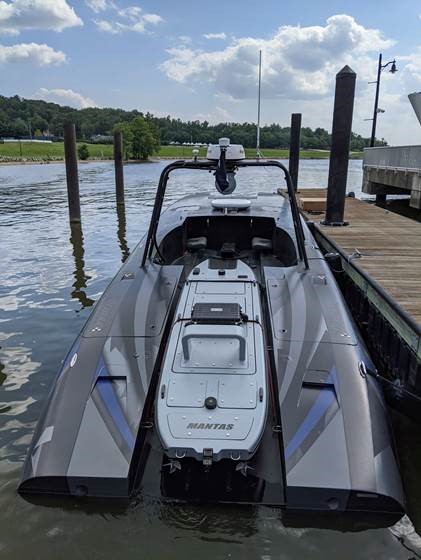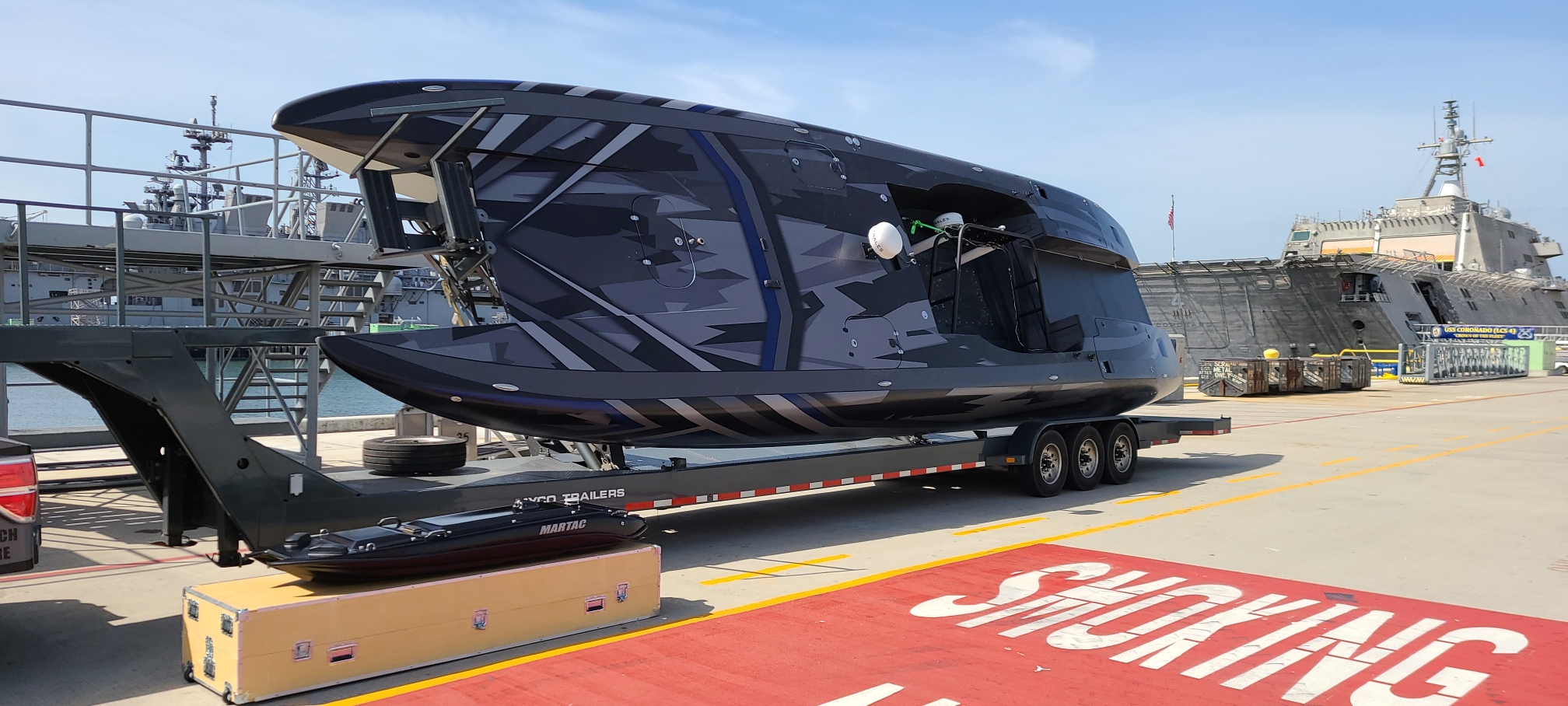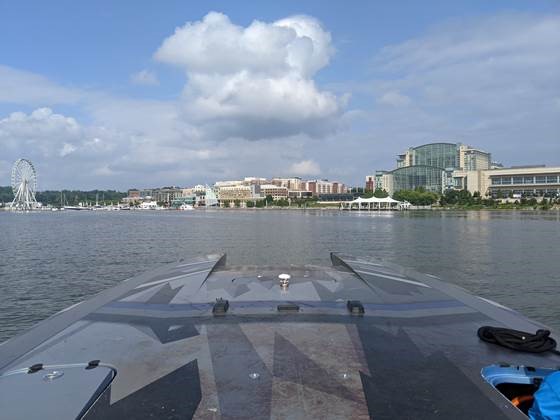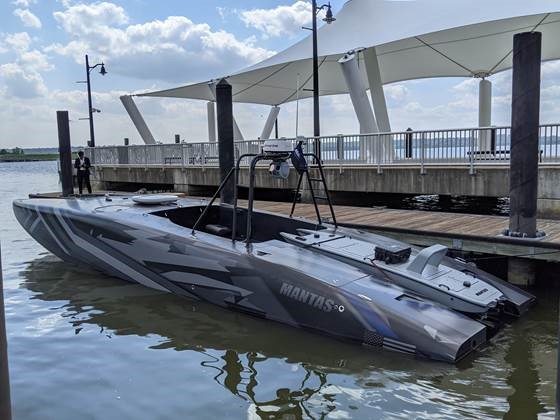By Jack Rowley
At the highest levels of U.S. intelligence and military policy documents, there is universal agreement that the United States remains at war, even after the conflicts in Iraq and Afghanistan have wound down.
As the cost of capital platforms—especially ships and aircraft—continues to rise, the Department of Defense is increasingly looking to procure comparatively inexpensive unmanned systems as important assets to supplement the Joint Force.
As the United States builds a force structure to contend with high-end threats, one of the key technologies embraced are unmanned systems.
Both the DoD and the DoN envision a future force with large numbers of unmanned systems complementing manned platforms.
The conflicts in Iraq and Afghanistan have spurred the development of unmanned air vehicles and unmanned ground vehicles to meet urgent operational needs. As a result, the lion’s share of previous years DoD funding for unmanned systems has gone to air and ground systems, while funding for unmanned maritime systems (unmanned surface vehicles and unmanned underwater vehicles) has lagged.
However, this balance is shifting, as increasingly, warfighters recognize the need for unmanned maritime systems in the fight against high-end adversaries, as well as against nations to whom these adversaries export their weapons systems.
Like their air and ground counterparts, these unmanned maritime systems are valued because of their ability to reduce the risk to human life in high threat areas, to deliver persistent surveillance over areas of interest, and to provide options to warfighters that derive from the inherent advantages of unmanned technologies.
The U.S. DoD Commitment to Unmanned Systems
The U.S. Department of Defense’s vision for unmanned systems is to integrate these assets into the Joint Force. Because unmanned systems are used by all the military services, the DoD publishes a roadmap to provide an overarching vision for the military’s use of unmanned systems.
An article published in Inside the Navy soon after the new roadmap’s release noted, “The Defense Department’s new 30-year unmanned systems plan—the first update of the roadmap in four years—aims to chart a three-decade guide for the rapidly developing field of unmanned systems technology.”
The most recent roadmap, the FY 2017-2042 Unmanned Systems Integrated Roadmap, singled out the need for enhanced UxS autonomy, noting:
“DoD maintains a vision for the continued expansion of unmanned systems into the Joint Force structure, and identifies areas of interest and investment that will further expand the potential integration of unmanned systems. The intent of this document is to provide overarching strategic guidance that will align the Services’ unmanned systems goals and efforts with the DoD strategic vision…
“As DoD has embraced the use of unmanned systems across nearly every operating environment, this strategy will allow DoD to capitalize on the technology advancements and paradigm shift that unmanned systems provide.”
As the Unmanned Systems Integrated Roadmap notes, unmanned systems are especially important assets in those areas where the U.S. military faces a peer competitor with robust defenses.
The Joint Operational Access Concept identifies, “Unmanned systems, which could loiter to provide intelligence collection or fires in the objective area,” as a key capability that is especially valuable in areas where an adversary has substantial defenses that can limit access of U.S. and coalition forces.
And unmanned systems are a key component in executing the United States AirSea Battle Concept (now re-branded as the Joint Concept for Access and Maneuver in the Global Commons, or JAM-GC) in high threat areas such as the Western Pacific, where adversary defensive systems pose an unacceptably high risk to manned aircraft and surface platforms.
The U.S. Navy Vision for Unmanned Systems
The U.S. Navy has a rich history of unmanned systems development. That history needs no retelling here. What is important is the fact that a series of recent studies have helped the Navy develop a vision for unmanned systems, as well establish goals for integrating these assets into the Fleet. The U.S. Navy’s commitment to—and dependence on—unmanned systems is also seen in the Navy’s official Force Structure Assessment, as well as in a series of “Future Fleet Architecture Studies.”
In each of these studies: one by the Chief of Naval Operations Staff, one by the MITRE Corporation, and one by the Center for Strategic and Budgetary Assessments, the proposed Navy future fleet architecture had large numbers of air, surface, and subsurface unmanned systems as part of the Navy force structure.
Indeed, these reports highlight the fact that the attributes that unmanned systems can bring to the U.S. Navy fleet circa 2030 have the potential to be truly transformational.
In his FRAGO 01/2019 order, Chief of Naval Operations, Admiral Michael Gilday, reemphasized the Navy’s commitment to a plan for a future fleet with substantial numbers of unmanned systems. The U.S. Navy is planning for a substantial investment in unmanned systems—especially unmanned surface systems. For example, the Navy established a “Surface Development Squadron,” to experiment with unmanned ships.
Future development ideas call for a “Ghost Fleet” of autonomous unmanned surface ships that could operate against an enemy force without putting Sailors in harm’s way.
And it should come as no surprise that Congress is increasingly interested in the Navy’s progress on unmanned surface vehicles, as witnessed by an increasing number of Congressional Research Service reports on USVs.
As another indication of the U.S. Navy’s commitment to an unmanned future, a panel of naval experts from various organizations emphasized this commitment and provided part of the “why” behind the Navy’s course change. Ronald O’Rourke, naval affairs specialist at the Congressional Research Service, noted that, “The Navy’s next force structure assessment likely will add significant numbers of large and medium-sized unmanned surface vessels to meet the challenges of a new era of Great Power competition. The emphasis on unmanned for the new shift in Fleet composition would show the urgency with which the Navy is attacking the situation, even without a concept of operations as to how these vessels would be used.”
Bryan Clark, senior fellow of the Center for Strategic and Budgetary Assessments, noted that, “One reason for the move was the speed to which unmanned vessels can integrate into the Fleet. You are much more likely to find a way to use unmanned single-mission vessels in the Fleet than new multi-mission manned vessels.
More recently, the America’s new maritime strategy, Advantage at Sea, reconfirms the Navy’s commitment to unmanned systems as an important part of the Sea Service’s assets, noting, in part, “Cost-effective platforms and manned-unmanned teaming will increase the capacity of the Fleet and expand our ability to distribute our forces…Naval forces will mix larger platforms with standoff capabilities and smaller, more-affordable platforms—including optionally manned or unmanned assets—that increase our offensive lethality and speed of maneuver.”
The strategy operationalizes the Navy’s Unmanned Campaign Framework. Advantage at Sea goes on to note:
“Our unmanned campaign plan will synchronize our efforts to field a multi-domain portfolio of shore-launched and sea-launched unmanned platforms with urgency.
“Unmanned ISR platforms will add capability to monitor, record, and report instances of coercive behavior, providing evidence suitable for diplomatic engagement and public audiences.
“They will also add capability for scouting, targeting, communications, and battle damage assessment. Weapons platforms will add inventory depth while supporting platforms provide additional capacity and flexibility.”
As an adjunct to the Unmanned Campaign Framework, in July of this year, the Navy published a Science & Technology Strategy for Intelligent Autonomous Systems which reinforces the Navy’s commitment to equip its unmanned systems with the artificial intelligence required to make them more and more autonomous.
It is difficult to overstate the importance of these two reports in putting the Navy on a path for fully leveraging unmanned systems as warfighting partners.
Several Streams Came Together at the 2021 Navy League SeaAirSpace Exposition
It is one thing to issue documents providing a vision for unmanned systems, and quite another to bring together disparate groups—operational military, acquisition professionals and defense-focused industry firms—in one place.
This occurred earlier this month at the annual Navy League SeaAirSpace Exposition.
Whether it was senior officials reinforcing the need for unmanned systems, key acquisition leaders articulating the plan to rapidly integrate unmanned systems into the Fleet, or industry professionals demonstrating the attributes of their unmanned platforms, it is likely that this event has helped accelerate the U.S. Navy’s unmanned journey.
In his keynote address at NLUS SAS, the Chairman of the Joint Chiefs of Staff, General Mark Milley, said this about the DoD’s vision for unmanned systems as well as the technologies that make UxS more capable:
“The rapid development of a vast array of new technologies is changing the fundamental character of war, and if the U.S. military fails to adapt, it could mean future generations would suffer massive casualties in the next major power conflict.
“About 40 to 50 new technologies will evolve very rapidly in the next 15 to 20 years and will fundamentally change the character of war. Unmanned systems, artificial intelligence, 5G technology and other concepts that will be available to all major powers. The nation that masters those technologies is likely to have a distinct advantage.”
In a U.S. Navy-focused briefing, the Naval Sea Systems Command program manager for unmanned maritime systems (PMS-406), Captain Peter Small, presented a program overview detailing the breadth and depth of the Navy’s plans for unmanned maritime systems describing the Navy’s commitment to unmanned surface warfare as well as unmanned undersea warfare, describing some of the platforms the that the Navy is testing and evaluating to fulfill a number of warfighting missions.
In other venues, Captain Small has explained how the U.S. Navy has been testing and evaluating a wide range of unmanned maritime systems prototypes. While some of the vehicles being tested, such as ONR’s CARACaS, are funded via various U.S. Navy means, many others are prototypes that industry brings to various events at their own expense in order for Navy officials to see their product in the operational environment.
Two of these unmanned maritime systems on display at NLUS SAS were the Devil Ray and MANTAS USVs, both manufactured by Florida-based Maritime Tactical Systems, Inc. (MARTAC).
The reason why Navy League officials invited MARTAC to bring these two platforms (the 12-foot MANTAS and 38-foot Devil Ray), to NLUS SAS was that they are leading candidates to fulfill the Navy’s desire to integrate unmanned maritime systems into the Fleet as rapidly as possible.
Both USVs are commercial-off-the-shelf (COTS) products that have been put in the hands of U.S. Sailors and Marines in the past several years in a series of U.S. Navy and Marine Corps exercises, experiments and demonstrations.
These events were as diverse as the Ship-to-Shore Maneuver Exploration and Experimentation and Advanced Naval Technology Exercise, the Battlespace Preparation in a Contested Environment, the Surface Warfare Distributed Lethality in the Littoral demonstration, the Bold Alligator exercise series, and Valiant Shield, Trident Warrior, Integrated Battle Problem UxS 2021, Coastal Trident, and others.
The reason that these USVs are at Technology Readiness Level Nine (TRL-9—the actual system has been proven through successful mission operations) is that, since 2016, these platforms have been placed in the hands of Sailors and Marines who have provided invaluable feedback that enabled MARTAC engineers to upgrade and make serial improvements to both the X-Class MANTAS and the Expeditionary-Class Devil Ray.
Hundreds of NLUS SAS attendees saw the MANTAS T12 and Expeditionary-Class Devil Ray T38E “up close and personal” and received an operational and technical briefing on the craft from MARTAC CEO, Bruce Hanson.
He explained the performance of these craft in the multiple missions they performed in the Navy, Marine Corps and Army events listed above.
While prose descriptions of these MANTAS and Expeditionary-Class Devil Ray attributes – as well as the still pictures accompanying this article – are useful in understanding just what these COTS USVs can bring to the fight, sometimes a video conveys so much more.
The short video clip on the authoritative Naval News website below puts you in the Devil Ray as it goes through its paces at NLUS SAS.
A Way Ahead for Unmanned Maritime Systems to Support the U.S. Navy
As the U.S. Navy is challenged by Congress regarding its ambitious plans to develop families of large, medium and smaller unmanned systems in all domains, one way to alleviate these concerns is to move forward with the fielding of proven commercial-off-the-shelf systems that have been thoroughly tested in a wide range of Navy and Marine Corps exercises, experiments and demonstrations.
While evolutionary in nature, this disruptive capability delivered using COTS technologies such as the Devil Ray and MANTAS USVs as can provide the U.S. Navy with near-term solutions to vexing operational challenges, while demonstrating to a skeptical Congress that the Navy does have a concept-of-operations to employ the unmanned systems it wishes to procure.
NLUS SAS was a big stage for all stakeholders to see these USVs “up close and personal.”
This approach can deliver needed capabilities to the Fleet and Fleet Marine Forces today, rather than on some distant, future horizon.
Attendees at NLUS SAS are likely to not only be more knowledgeable regarding the promise and prospect for unmanned maritime systems, but having seen TRL-9 COTS systems ready to deploy, they are additionally more confident that the U.S. Navy can actually execute its ambitious plans to integrate unmanned systems into the Fleet today and tomorrow.
Jack Rowley is the Chief Technology Officer and Senior Naval Architect and Ocean Engineer with Maritime Tactical Systems (MARTAC).






